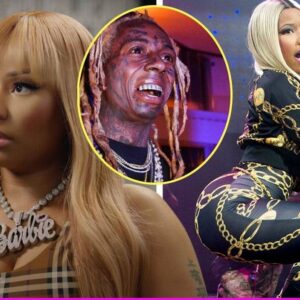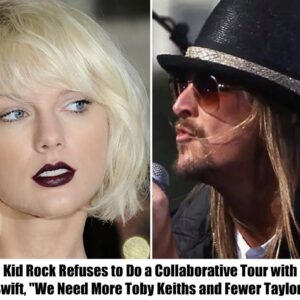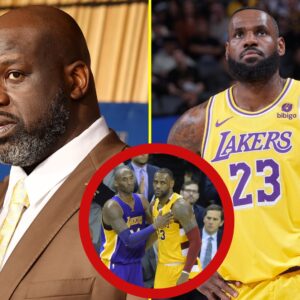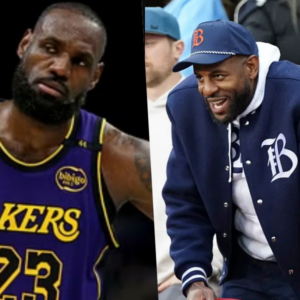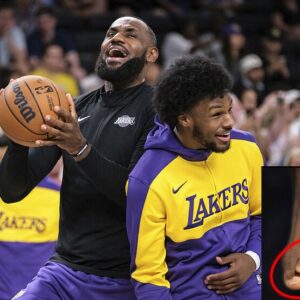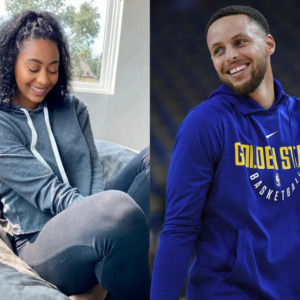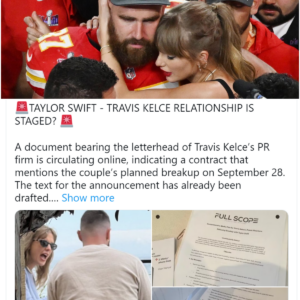Female rappers have been a part of hip-hop since its debut
Women Battle Misogyny to Send Hip-Hop Spinning in a New Direction
More

FILE – Salt N’ Pepa display the awards they won for Best Rap Duo or Group Performance backstage at the 37th annual Grammy Awards at the Shrine Auditorium in Los Angeles, Calif., March 1, 1995. Women have fought to shape their identification in hip-hop and demand recognition. At its 50th anniversary, female rappers are taking their moment to shine – while still demanding respect and facing decades-old challenges. (AP Photo/Mark J. Terrill, File)
MARK J. TERRILL
ATLANTA (AP) — Rasheeda Frost’s decades-long relationship with hip-hop started in 1981. She was a curious, energetic kindergartener — eager to touch and explore anything put in front of her.
Rasheeda remembered her mother presenting her with a huge, white box — it was a record player that she would continuously spin, not knowing what its purpose was. Then, she said, her mom gave her a record with a colorful cornucopia printed in the middle: The Sugarhill Gang.
Recommended Videos
Powered by AnyClip
Former FTX CEO Sam Bankman-Fried Is Due Back in Court
25.5K
19


Former FTX CEO Sam Bankman-Fried Is Due Back in Court
NOW PLAYING

Zach Braff still close to Florence Pugh

‘Never compromise your vision’: Dr Dre honoured with Global Impact Award at Grammys

Talking Tech: Layoffs Hitting Tech Hard

Lisa Marie Presley didn’t like being in spotlight
“She must’ve just known hip-hop was embedded in me at such a young age,” the MTV “Love and Hip-Hop: Atlanta” reality star said.
The then 5-year-old would dance until she couldn’t anymore. “I played that record until I tore it up and scratched up the record.”
Frost fell in love with hip-hop. Lyrics, music videos, and magazine covers display a genre that is male-centered and male-dominated. Despite this challenge, Frost took her passion a step further and joined the ranks of female rappers and emcees who battled misogynoir, sexism, and patriarchy to send hip-hop spinning in a different direction, making way for women to take the main stage in the genre.
Political Cartoons

View All 1306 Images
“I had to go out there and work triple as hard, make sure I’m respected, not get taken advantage of as a female, and really go hard for what I know and stand for something,” Frost said.
From The Sequence releasing the first rap record by an all-female group, called “Funk You Up” in 1979, to MC Sha-Rock’s iconic performance on “SNL” as a part of Funky 4+1, female rappers have been a part of hip-hop since its debut. Women have fought to shape their identification in hip-hop and demand recognition.
In the 50 years since DJ Kool Herc extended breaking at a back-to-school party, women have gone from donning a male-imitated aesthetic, to owning their sexuality in lyrics, to selling out stadiums for their own concerts. At hip-hop’s 50th anniversary, female rappers are taking their moment to shine — while still demanding respect and facing decades-old challenges.
Msia Kibona Clark, an African culture and feminist studies professor at Howard University, said women were “largely invisible” in hip-hop during the ‘80s and early ’90s.
“Early on the idea was to imitate men in terms of the aesthetics, and the idea was the hip-hop uniform — baggy clothes and sneakers and t-shirts,” said Clark.
Clark said early female rappers had the challenge of navigating a culture tinged with sexism and sexual harassment, as well as carving out a perspective that often wasn’t heard in the mainstream.
“To me those were the dark ages of hip-hop because it just wasn’t enough women voices,” Queen Latifah said during an interview with The Associated Press.
SiriusXM host Roxanne Shante started entering rap battles and making records as a young teen in the 1980s. The hip-hop legend’s battle tracks solidified her as one of the earliest and fiercest emcees at the age of 14.
“I came in as little sis; even to the point of where sometimes they didn’t even want to let me participate, because sometimes the men felt that I was that good,” Shante, told the AP, detailing how it was a problem for men to battle rap a teen girl.
Shante, along with artists such as Salt-N-Pepa, Yo-Yo, and Queen Latifah were voices that amplified feminist storytelling and issues during the ‘80s and early ’90s.
Entertainer and philanthropist Yo-Yo was known for rapping about female empowerment and demanding respect, but she still dealt with having to “stay in a woman’s place.”
“Those were some of the challenges when the record labels only respected men,” Yo-Yo said.
During the early days, hip-hop itself was being questioned, and later, the genre was being condemned as “gangsta rap.” DJ Spinderella recalled consistently being asked how long she thought hip-hop would last.
Female emcees found themselves having to defend the genre as well as prove themselves worthy of holding the mic.
“When there was negativity or any kind of misogyny, it only pushed us even more,” said DJ Spinderella, a member of the hip-hop group Salt-N-Pepa. “Our first goal was to shake our thing, but then the fact that we were inspiring women to become their better selves despite the negative was important.”
By the late ’90s and early 2000s, women were becoming more visible in hip-hop. Female artists offered a variety of sounds and trends — from Lauryn Hill’s melodic rap to Missy Elliott’s experimental music videos.
Challenges for female rappers persisted. As more women entered the genre, some were uniting on hit records such as “Ladies Night,” while others were pit against each other. At the same time, the hypersexualization of women was ramping up.
“With the historical treatment of women and how women have been sexualized, I think women artists have been able to reclaim it,” said Christin Smith, an independent consulting researcher.
Although female rappers have pushed sex positive lyrics since the ‘80s, the mid-to-late ’90s saw the advent of artists such as Lil’ Kim and Foxy Brown more overtly displaying and owning their sexuality. This drew controversy — and hypocrisy.
“When I came out with songs like ‘Make It Vibrate’ and songs like ‘Georgia Peach’, I got a lot of resistance from radio because they said it was too sexy,” said Frost, who released her first album “Dirty South” in 2001. “It was a battle every single day just to be heard, to be respected.”
As rap continued to evolve from the mid-to-late 2000s, rappers such as Remy Ma and Trina continued to hold down the booth. Nicki Minaj’s impact on the genre was explosive in the 2010s — as reflected by her winning the BET Awards best female hip hop artist from 2010 through 2016.
The late 2010s saw a change in technology. Internet access became widely available due to the smartphone . This gave rise to a new era of artists who social media as a way to gain traction. Hip-hop also became a part of pop culture, with the sound being used in movies and commercials. Hip-hop artists became the faces of popular brands and fashion labels.
The shifting pop culture landscape, along with the tenuous work of female rap pioneers, helped pave the way for what audiences see now: an explosion of female rappers and artists on stage and behind-the-scenes.
“I love it. I think that we have our own table. We just don’t have to get in to fit in. I think women are making powerful moves,” said Yo-Yo.
Women in hip-hop have gone from behind-the-scenes to winning prestigious awards for their artistry. They’ve also ventured into other industries. MC Lyte is a popular voiceover artist, recognizable for her work voicing the BET Awards and the 2023 Grammy Awards. Missy Elliott this year will become the first female rapper inducted into the Rock & Roll Hall of Fame. Queen Latifah has starred in numerous movies, TV shows, and her own talk show. Roxanne Shante hosts “Have a Nice Day” on LL Cool J’s Rock Tha Bells Radio on SiriusXM.
The theme of female empowerment remains but the message has changed — with artists such as Megan thee Stallion and the City Girls rapping about sexual liberation and hypergamous values, as well as women having their own money.
The pervasiveness of misogyny and patriarchal violence still threatens the existence of female rappers. Some experts think that female rap is more hyper-sexualized than ever before, and artists must fit a certain body standard to be accepted.
Clark pointed out the rise in popularity of the Brazilian butt lift surgery among female rappers. “It’s hard to tell whether or not someone is doing that because they genuinely want to do that. They feel more pleased with their body with that procedure versus those who are told if you want to make it in this industry, you have to do this.”
There’s also a push for more femme-presenting queer and non-binary artists to have a platform in a genre that has been largely homophobic and heteronormative since its inception.
“My hopes for the future of hip-hop is to definitely see more queer people in the mainstream,” said Itz(asterisk)Nobi, a femme-presenting non-binary rapper. “We definitely have such an interesting angle to share as far as just humanity and being a person.”
Itz(asterisk)Nobi said they do notice more representation — and so do many female rap pioneers. Artists and fans hope that hip-hop will continue to diversify and give every person listening something to relate to — and hope for.
“There’s so much more to this world,” Itz(asterisk)Nobi said. “I think that’s what’s so beautiful about art and music, is that you can share so much with somebody.”
———-
AP Entertainment Writer Jonathan Landrum Jr. contributed from Los Angeles.
Copyright 2023 The Associated Press. All rights reserved. This material may not be published, broadcast, rewritten or redistributed.
News
Nicki Minaj Admitted Lil Wayne’s Jokes About Her Body Led Her to Get Butt Injections
Nicki Minaj has had rumors flying about her rear end for years. She admitted that she’s gotten work done on her butt, but her desire to change…
BREAKING: “I would never accept saving your woke brand, it’s too toxic and dirty”: Riley turns down Bud Light’s $50 million offer
In an era where corporate brands are increasingly attempting to align themselves with social and political causes, the intersection of marketing and activism has never been more…
Breakthrough: Elon Musk invests $1 billion in Mel Gibson and Mark Wahlberg’s new NON-WOKE Movies Studio
In a surprising turn of events, billionaire entrepreneur Elon Musk has announced a substantial investment of $1 billion in a new film production venture led by Hollywood…
BREAKING: Roseanne Barr Joins Forces Non-Woke Production Studio
BREAKING: Roseanne Barr Joins Forces Non-Woke Production Studio In an unexpected move that has sent ripples through Hollywood, comedic icon Roseanne Barr has announced her collaboration with…
Breaking: Mel Gibson’s New Non-Woke Film Studio Will See James Woods Join Him After He Leaves Hollywood
The entertainment world has been shaken by the official announcement that legendary actor James Woods is joining Mel Gibson’s brand-new, non-woke film company in Hollywood. With this…
Breaking: Kid Rock Says “We Need More Toby Keiths and Fewer Taylor Swifts” and Refuses to Join Taylor Swift on a Collaborative Tour.
Breaking: Kid Rock Says “We Need More Toby Keiths and Fewer Taylor Swifts” and Refuses to Join Taylor Swift on a Collaborative Tour. In a music business…
End of content
No more pages to load
